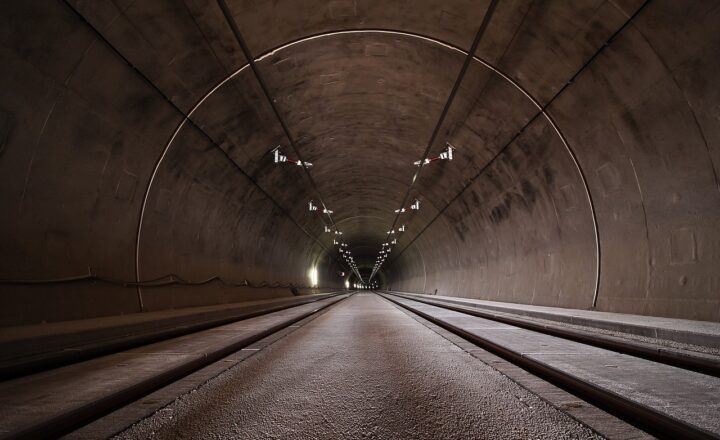
Subway systems around the globe have become a vital part of urban infrastructure, facilitating transportation for millions of daily commuters. Yet, in many cities, these subways face a significant challenge: overcrowding. In this article, we will explore the underlying reasons for the overcrowding in some of the world’s busiest subway lines, examine the impact on commuters and cities, and discuss potential solutions.
1. The Historical Context of Subway Development
Subway systems were first introduced in the 19th century as a solution to the growing congestion on city streets. The London Underground, which opened in 1863, was the first of its kind, quickly becoming a source of rapid transit for the burgeoning population of the city.
As cities worldwide expanded, subway systems were developed to address transportation needs.
Over time, many of these systems grew extensively, often without adequate planning for capacity. Major cities like New York, Tokyo, and Paris saw significant population growth, leading to an increased demand for public transportation. Thus, while subway networks initially kept pace with the growth, the unexpected surge in urban populations led to overcrowded trains and platforms.
#
Key factors contributing to this congestion include:
– Urbanization: As more people move to urban areas for job opportunities, the demand for efficient transit increases.
– Commuting Patterns: Changes in work habits, such as more people working long hours, contribute to peak commuting times and severe overcrowding.
2. Economic Influences on Subway Usage
Economic factors also play a crucial role in subway usage. As cities grow and economies flourish, more individuals rely on public transport to navigate their daily commutes, exacerbating overcrowding. Below are some economic influences that lead to an increase in subway ridership:
– Affordable Housing: As housing becomes unaffordable in urban centers, many workers commute long distances from more affordable suburban areas. This phenomenon, known as “urban sprawl,” increases the load on subway systems.
– Public Transit Funding: When cities invest heavily in public transit infrastructure, it often leads to increased ridership. Investing in scalable systems is essential, but it also means higher usage rates, which can lead to overcrowding if not accounted for.
#
Economic Impact on Commuter Experience
– Cost of Commuting: The financial strain on commuters can increase, especially when crowded conditions lead to longer travel times.
– Improved Employment Access: Overcrowding may hinder access to job opportunities for workers who rely on public transit, creating social inequality in urban centers.
3. Key Cities and Their Overcrowded Subway Lines
#
Tokyo Metro
Tokyo boasts one of the most efficient subway systems globally, yet it is also notoriously overcrowded. Lines like the Yamanote Line regularly see millions of passengers daily. Overwhelming demand comes from the dense population of Tokyo and its surrounding areas.
– Peak Times: Commuters are densely packed during rush hour, with trains often operating at over 200% capacity.
#
New York City Subway
The New York City subway system is famed for its scale; however, it struggles with overcrowding, particularly on the busiest lines such as the 1, 2, and 4. Factors such as aging infrastructure and maintenance issues exacerbate the situation.
– Challenging Renovation: Many lines are understaffed or poorly maintained, which can lead to service delays and increased wait times, worsening overcrowded conditions.
#
Seoul Subway
Seoul’s subway system, widely regarded as one of the most advanced, also faces challenges with overcrowding, especially during peak hours. The rapid urbanization of the last few decades has placed immense pressure on the system.
– Adapting to Demand: Seoul has made substantial investments in expanding its subway system, but it is still overwhelmed by commuter numbers, leading to platforms and trains reaching full capacity very quickly.
4. Health and Safety Implications of Overcrowding
Overcrowding in subway systems poses significant health and safety risks:
– Increased Stress: Daily commutes in cramped conditions can lead to increased stress and anxiety among passengers.
– Health Risks: During pandemics, crowded subways can quickly become hot spots for the spread of diseases.
– Safety Hazards: Overcrowded stations can lead to accidents, as people jostle for space, leading to slips and falls.
5. Strategies for Mitigating Overcrowding
To combat overcrowding, cities have implemented various strategies that range from infrastructural changes to technological innovations:
– Expanding Capacity: This involves adding more train cars or increasing train frequency, thereby accommodating more passengers.
– Smart Technology: Implementing smart ticketing systems, real-time capacity tracking in cars, and mobile applications can provide commuters with timely updates, allowing them to avoid facilities during peak hours.
– Improving Connectivity: Connecting subway lines with other forms of public transit can help distribute passenger load more evenly across the network.
– Promoting Alternative Modes of Transport: Encouraging biking, walking, and the use of electric scooters can alleviate some pressure on subways.
Conclusion
As urban populations continue to grow, the challenge of overcrowded subway lines will likely persist. Investing in infrastructure, technology, and alternative transportation modes are critical components in mitigating these challenges. Public transit is not just a convenience; it is essential for maintaining economic stability, environmental sustainability, and social equity in urban areas. By addressing the root causes of overcrowding, cities can enhance the commuting experience for millions of citizens.
The future depends on sensible development and continued investment in subway systems to ensure they serve as efficient arteries of urban life rather than becoming overcrowded bottlenecks.






